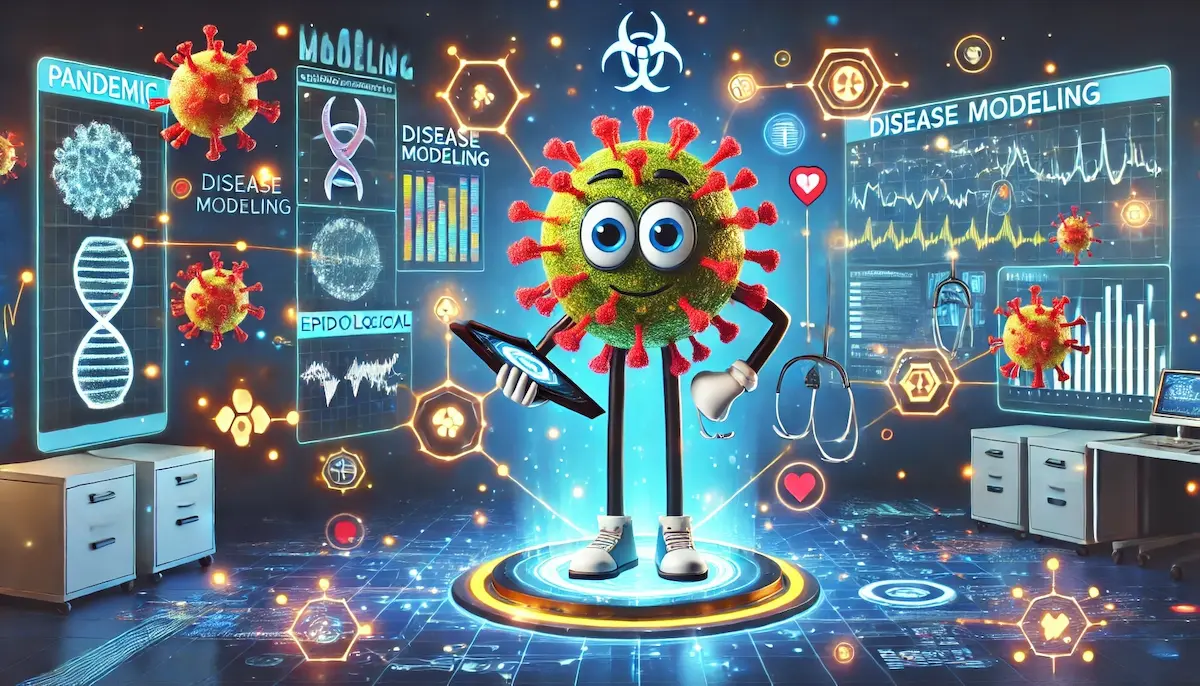Pandemic modeling is an essential tool in understanding and managing the spread of infectious diseases on a global scale. By simulating various scenarios and predicting the potential impact of pandemics, these models help public health officials make informed decisions about prevention, control, and mitigation strategies.
What is Pandemic Modeling?
Pandemic modeling involves using mathematical and computational techniques to simulate the spread of infectious diseases within populations. These models can forecast the trajectory of an outbreak, estimate the impact of interventions, and inform policy decisions to mitigate the effects of a pandemic.
Key Components of Pandemic Modeling
Types of Models
- Deterministic Models: Use fixed parameters to predict disease spread, providing a general overview of the epidemic’s course. Common examples include the SIR (Susceptible-Infectious-Recovered) model and its variations (e.g., SEIR, which includes an Exposed state).
- Stochastic Models: Incorporate random variations in parameters, offering a more nuanced and realistic simulation of disease spread. These models can account for chance events and variability in disease transmission.
- Agent-Based Models: Simulate interactions of individual agents (people) within a population, capturing the complexity of human behavior and social networks. These models are highly detailed and can model specific intervention strategies.
Key Parameters
- Basic Reproduction Number (R0): The average number of secondary infections produced by a single infected individual in a fully susceptible population. An R0 greater than 1 indicates that the disease will likely spread.
- Incubation Period: The time between exposure to the pathogen and the onset of symptoms. This period affects the timing of interventions.
- Infectious Period: The duration during which an infected individual can transmit the disease to others.
- Transmission Rate: The rate at which the disease spreads from infected to susceptible individuals.
- Recovery Rate: The rate at which infected individuals recover and gain immunity.
Data Inputs
Accurate data is crucial for reliable pandemic modeling. Key data inputs include:
- Epidemiological Data: Information on case counts, deaths, hospitalizations, and recoveries.
- Demographic Data: Population size, age distribution, and density.
- Mobility Data: Patterns of movement and travel, which affect the spread of the disease.
- Healthcare Capacity: Availability of hospital beds, ventilators, and medical staff.
Applications of Pandemic Modeling
Forecasting and Scenario Analysis
Pandemic models can predict the future course of an outbreak under different scenarios. By adjusting parameters and intervention strategies, these models can estimate potential outcomes and inform public health planning.
- Baseline Forecasting: Predicting the natural course of the pandemic without interventions.
- Intervention Scenarios: Assessing the impact of measures such as social distancing, quarantine, vaccination, and travel restrictions.
Resource Allocation
Models help allocate resources effectively by predicting where and when healthcare services will be needed most.
- Hospital Capacity Planning: Estimating the number of hospital beds, ICU units, and medical supplies required.
- Vaccine Distribution: Optimizing the allocation and distribution of vaccines to maximize coverage and effectiveness.
Policy and Decision-Making
Pandemic modeling provides evidence-based insights that guide public health policies and interventions.
- Containment Strategies: Evaluating the effectiveness of containment measures such as lockdowns, contact tracing, and mask mandates.
- Reopening Plans: Informing decisions about lifting restrictions and reopening economies based on predicted case trends and healthcare capacity.
Public Communication
Models can be used to communicate the potential impact of the pandemic and the importance of public health measures to the general public and stakeholders.
- Risk Communication: Explaining the rationale behind interventions and expected outcomes to the public.
- Education: Providing educational tools and resources to help people understand the dynamics of disease spread.
Challenges in Pandemic Modeling
Data Limitations
Accurate and comprehensive data is critical for effective modeling. Incomplete or unreliable data can lead to incorrect predictions and suboptimal decisions.
- Data Gaps: Missing or incomplete data on case counts, transmission rates, and population movements.
- Reporting Delays: Delays in reporting cases and deaths can affect the accuracy of real-time models.
Model Uncertainty
All models involve assumptions and simplifications, leading to uncertainty in predictions. Sensitivity analysis can help assess the robustness of model outcomes to changes in key parameters.
- Parameter Uncertainty: Variability in estimates of key parameters such as R0, incubation period, and transmission rate.
- Structural Uncertainty: Differences in model structure and assumptions can lead to varying predictions.
Behavioral Factors
Human behavior significantly influences disease spread, and modeling these behaviors accurately is challenging.
- Compliance: Variation in public compliance with health measures such as social distancing and mask-wearing.
- Behavioral Changes: Changes in behavior over time as people adapt to the pandemic and interventions.
The Future of Pandemic Modeling
The future of pandemic modeling will be shaped by advancements in technology, data science, and interdisciplinary collaboration. Key areas of focus include:
Integration of Big Data and AI
The integration of big data and artificial intelligence (AI) can enhance the accuracy and real-time capabilities of pandemic models.
- Real-Time Data Integration: Using real-time data from various sources such as social media, mobile devices, and electronic health records to improve model accuracy.
- Machine Learning: Applying machine learning techniques to identify patterns and improve predictions.
Enhanced Collaboration
Collaboration between public health officials, researchers, and technology experts is essential for advancing pandemic modeling.
- Interdisciplinary Teams: Bringing together experts from epidemiology, computer science, mathematics, and public health to develop and refine models.
- Global Cooperation: Sharing data and modeling insights across countries and organizations to improve global pandemic response.
Personalized Interventions
Advances in modeling can lead to more personalized and targeted interventions based on individual and community risk factors.
- Precision Public Health: Tailoring interventions to specific populations and locations based on detailed modeling of local conditions and vulnerabilities.
Improved Public Health Infrastructure
Investing in public health infrastructure and data systems can enhance the effectiveness of pandemic modeling and response efforts.
- Surveillance Systems: Strengthening disease surveillance systems to provide timely and accurate data.
- Healthcare Infrastructure: Ensuring robust healthcare systems capable of responding to pandemic demands.
Blockfine thanks you for reading and hopes you found this article helpful.
